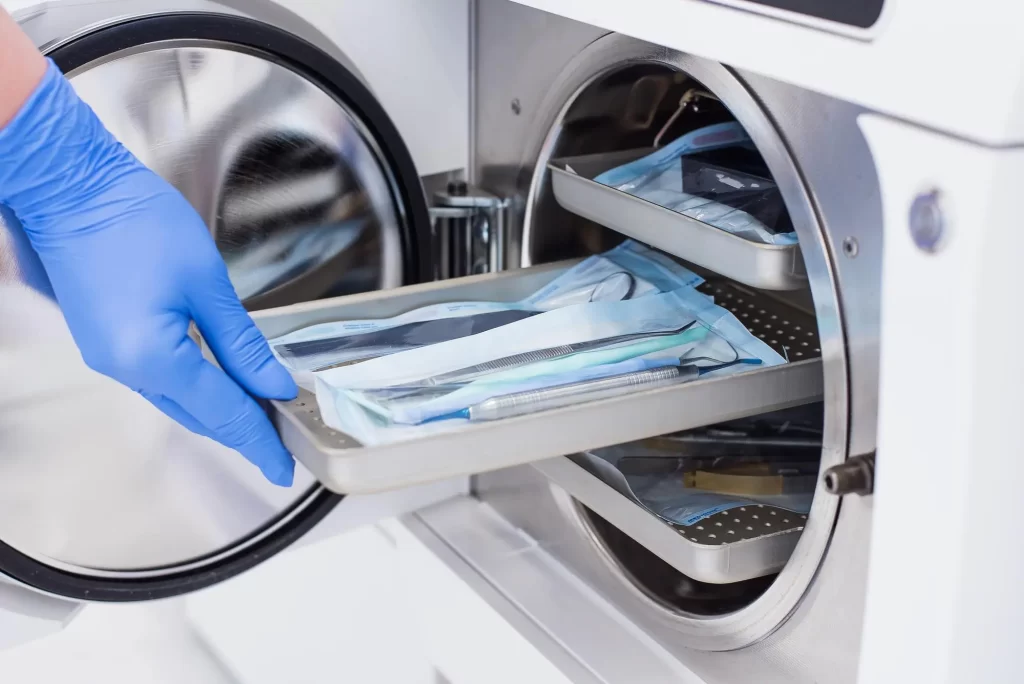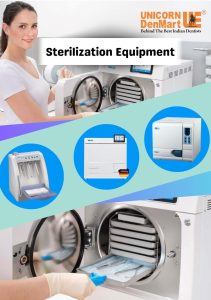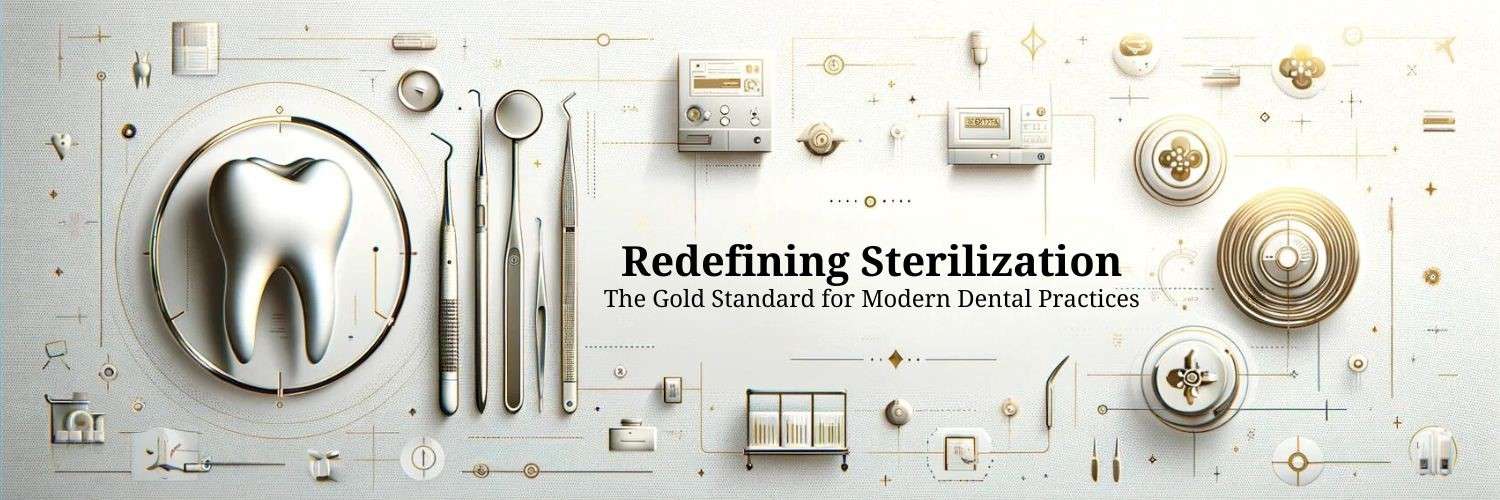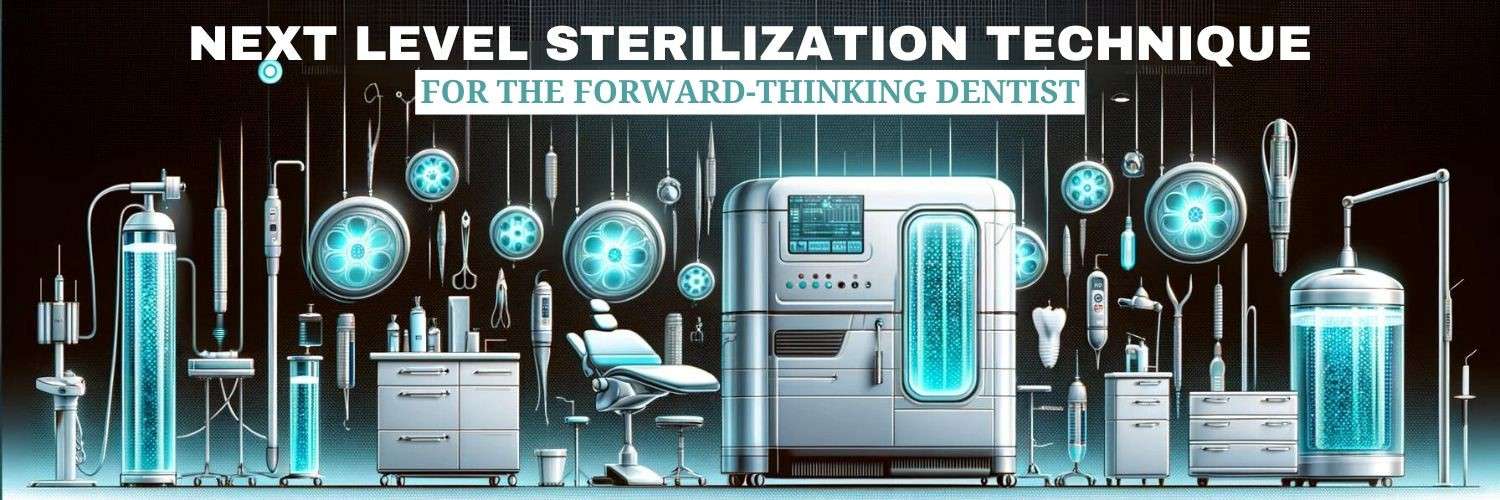Redefining Sterilization: The Gold Standard for Modern Dental Practices
In the realm of dental care, sterilization plays a pivotal role in safeguarding patient health and upholding the highest standards of clinic hygiene. The critical importance of sterilization processes cannot be overstated—it is the frontline defense against the spread of infections, ensuring that each instrument used in a dental procedure is free from harmful bacteria, viruses, and other pathogens. This foundational aspect of dental practice management not only protects patients but also dental professionals, reinforcing a safe environment for all dental interventions.
The evolution of sterilization technologies, particularly the adoption of dental autoclaves, marks a significant advancement in the pursuit of excellence in infection control within dental practices. Dental autoclaves, especially Class B autoclaves, represent the gold standard in sterilization equipment, offering a robust solution for effectively eliminating microbial life from dental instruments. These modern sterilization machines utilize steam under pressure, achieving higher temperatures than what most microorganisms can survive, thus ensuring the thorough decontamination of dental tools.
As we delve deeper into the significance of these modern sterilization technologies, it becomes clear that they are not just enhancing the safety protocols within dental clinics but are also reshaping the landscape of dental practice hygiene. The integration of advanced autoclaves and sterilization equipment into daily dental operations signifies a commitment to patient safety, operational efficiency, and the overall quality of dental care. This introduction sets the stage for a comprehensive exploration of how contemporary sterilization technologies, protocols, and equipment are instrumental in elevating the standards of infection control in modern dental practices, ensuring that safety and hygiene remain at the forefront of dental care delivery.

Understanding Sterilization in Dentistry
Exploring the Concept of Sterilization and Its Paramount Importance
Sterilization in dentistry encompasses the complete elimination of all forms of microbial life, including bacteria, viruses, fungi, and spores, from dental instruments and surfaces. This process is crucial for preventing cross-contamination and infection in dental settings, ensuring that each tool used is safe for patient contact. The paramount importance of sterilization lies in its ability to protect patients from potential infections that could be transmitted through contaminated dental instruments or surfaces, safeguarding their health and well-being during dental treatments.
Overview of Traditional vs. Modern Sterilization Methods
Traditionally, sterilization methods in dentistry relied heavily on manual cleaning followed by chemical disinfection or the use of dry-heat ovens and boiling water. However, these methods, while somewhat effective, presented limitations in terms of ensuring the complete eradication of all microbial life and could potentially damage delicate dental instruments over time.
The shift towards advanced sterilization solutions has been a game-changer in dental practice hygiene. Modern sterilization methods, especially the use of Class B autoclaves, represent a significant advancement in dental sterilization technology. Class B autoclaves use steam under pressure to penetrate every surface of dental instruments, providing a more effective and efficient sterilization process. These devices are designed to meet the stringent sterilization standards required in dental care, ensuring that instruments are not only clean but also fully sterilized and safe for use in patient care.
This shift to advanced solutions underscores a broader commitment within the dental profession to adopt the highest standards of infection control. By integrating modern sterilization technologies, dental practices can significantly reduce the risk of infection transmission, enhance patient safety, and improve overall practice efficiency. The evolution from traditional to modern sterilization methods highlights the dental profession’s ongoing efforts to embrace technological advancements that enhance the quality and safety of dental care.

The Advent of Dental Autoclaves
Introduction to Dental Autoclaves
The introduction of dental autoclaves has marked a transformative era in the field of dental sterilization, with Class B autoclaves emerging as the cornerstone of modern dental sterilization equipment. These devices have revolutionized the way dental practices ensure the safety and hygiene of their tools, offering a reliable and effective method to sterilize instruments thoroughly. Class B autoclaves, recognized for their advanced features and comprehensive sterilization capabilities, are specifically designed to meet the stringent sterilization needs of dental practices, accommodating a wide range of instruments, including those that are hollow or porous.
How Dental Autoclaves Operate and Their Benefits
Dental autoclaves, particularly the Class B models like the Melag Vacuclave 123 Autoclave, operate on the principle of pressurized steam sterilization. This process involves heating water to generate steam, which is then pressurized within the chamber to reach temperatures high enough to destroy all forms of microbial life, including bacteria, viruses, and spores. The Melag Vacuclave 123 Autoclave exemplifies state-of-the-art sterilization technology with its innovative features, such as pre-vacuum air removal and post-vacuum drying phases, ensuring that even the most challenging instruments are sterilized effectively.
The benefits of using a dental autoclave, particularly Class B models, are manifold. They offer a rapid and highly effective sterilization cycle, ensuring that dental instruments are ready for use in a timely manner without compromising on safety. Moreover, the reliability and consistency of sterilization processes provided by devices like the Melag Vacuclave 123 Autoclave significantly reduce the risk of cross-contamination and infection, reinforcing the practice’s commitment to patient safety.
The Gold Standard for Sterilization in Dentistry
Class B autoclaves are considered the gold standard for sterilization in dentistry due to their comprehensive sterilization capabilities, which are suitable for a wide range of dental instruments. The adoption of the Melag Vacuclave 123 Autoclave and similar models reflects a dental practice’s dedication to adhering to the highest standards of infection control, aligning with global health and safety protocols. Their ability to efficiently and effectively sterilize various types of dental instruments makes them an indispensable asset to modern dental practices aiming to provide safe and hygienic dental care.
Infection Control Protocols in Dental Practices
Overview of Sterilization Protocols
Sterilization protocols in dental practices are comprehensive procedures designed to prevent cross-contamination and manage infection control effectively. These protocols encompass a range of measures, from the proper cleaning and disinfection of surfaces to the meticulous sterilization of all dental instruments that come into contact with patients. The foundation of these protocols is based on guidelines provided by health authorities, such as the Centers for Disease Control and Prevention (CDC) and the World Health Organization (WHO), which outline the best practices for sterilization and disinfection in healthcare settings, including dental clinics.
These protocols involve several key steps: pre-cleaning instruments to remove biological matter, using chemical disinfectants for surfaces and non-sterilizable items, and the thorough sterilization of all critical and semi-critical dental instruments. Sterilization processes are specifically designed to eliminate all microbial life, including bacteria, viruses, and spores, from instruments, ensuring they are safe for reuse.
The Role of Dental Sterilization Equipment
Dental sterilization equipment plays a crucial role in adhering to and enhancing infection control protocols. The use of advanced sterilization technology, such as dental autoclaves, is central to ensuring that the highest standards of hygiene and safety are maintained. Dental autoclaves, for example, use steam under high pressure to achieve sterilization, a method recommended by health authorities for its efficacy in destroying all forms of microbial life.
The integration of these sterilization devices into dental practices not only supports compliance with infection control guidelines but also enhances the overall safety and efficiency of dental care. By providing a reliable and effective means of sterilizing instruments, dental sterilization equipment helps to minimize the risk of infection transmission, protecting both patients and dental healthcare workers.
Moreover, modern sterilization equipment often includes features that facilitate the monitoring and recording of sterilization cycles, ensuring that every cycle meets the required standards. This capability is essential for maintaining documentation and accountability in infection control, allowing dental practices to verify and demonstrate their compliance with established protocols.

Innovations in Dental Sterilization Equipment
The realm of dental sterilization has witnessed remarkable advancements, with new technologies enhancing the efficiency, effectiveness, and reliability of sterilization processes. These innovations are critical for maintaining high standards of hygiene and patient safety in dental practices.
Advancements in Sterilization Technology
Recent advancements in dental sterilization technology have seen the development of high-speed sterilizers, which significantly reduce the time required for the sterilization cycle without compromising the thoroughness of the process. These devices utilize advanced steam and pressure systems to achieve sterilization at an accelerated pace, enabling dental practices to process instruments more quickly and serve patients more efficiently.
Another significant innovation is the integration of features designed to enhance the effectiveness of sterilization. This includes the development of sterilizers with improved monitoring and control systems, which ensure that each sterilization cycle meets the precise parameters necessary for eliminating all forms of microbial life. Modern sterilizers now often come equipped with digital displays, automated cycle documentation, and USB ports for data logging, providing dental practices with the ability to closely monitor and verify the sterilization status of their instruments.
Implementation in Dental Practices
One notable case study involves a dental clinic that transitioned to using a state-of-the-art high-speed sterilizer for their daily operations. The clinic reported a substantial reduction in turnaround times for sterilized instruments, which allowed them to increase the number of patients they could see in a day without compromising on safety or quality of care. The sterilizer’s advanced features, such as automated documentation, also streamlined compliance with regulatory standards, making it easier for the clinic to maintain accurate records of their sterilization processes.
Another example includes a dental practice that adopted sterilizers equipped with advanced monitoring technologies. These devices provided real-time feedback on the sterilization cycle, ensuring that every load of instruments was processed correctly. This level of control and verification not only bolstered the clinic’s confidence in their infection control measures but also enhanced patient trust in the safety of their procedures.
Ensuring Safe Dentistry Solutions Through Advanced Sterilization Technology
The adoption of advanced sterilization technologies is fundamentally linked to the provision of safe, reliable dental care. These technologies are not merely adjuncts to dental practice; they are essential components that safeguard against the transmission of infectious diseases, ensuring that dental clinics remain sanctuaries of health and safety. The critical connection between these technologies and dental care lies in their ability to eliminate all forms of microbial life, including bacteria, viruses, and spores, from dental instruments and surfaces, thereby preventing cross-contamination and infection among patients and dental staff.
The Future of Dental Practice Hygiene
Looking forward, the landscape of dental practice hygiene is poised for further transformation as emerging sterilization technologies and methods are developed and integrated. Innovations in this space are likely to focus on increasing sterilization efficiency, reducing energy and water usage, and enhancing the user-friendliness of sterilization equipment. For instance, future sterilizers may incorporate more sophisticated sensors and AI-driven algorithms to adjust the sterilization cycle in real-time based on the load and type of instruments being sterilized. This would optimize energy use and ensure the most effective sterilization for each specific case.
Another anticipated advancement is the development of more compact, eco-friendly sterilizers that can fit seamlessly into any dental practice, regardless of size. These devices might use alternative sterilizing agents that are less harmful to the environment yet equally effective at killing pathogens. Furthermore, the integration of cloud-based technologies for monitoring and documenting sterilization cycles is expected to become standard, enabling dental practices to effortlessly maintain and access records of their sterilization processes for compliance and quality assurance purposes.
Predictions on Emerging Sterilization Technologies and Methods
Emerging sterilization technologies might also include the use of non-traditional sterilizing agents, such as plasma, UV light, or ozone, offering effective sterilization with potentially lower operational costs and environmental impact. These methods could provide dental practices with additional options for sterilizing equipment that cannot withstand the high temperatures and pressures of traditional steam autoclaves.
In addition, the continuous push towards automation in dental practices is likely to see the development of fully automated sterilization units. These units could handle everything from instrument cleaning and packaging to sterilization and storage, minimizing manual handling and further reducing the risk of contamination.

Conclusion
The journey of sterilization within dental practices has been marked by significant evolution and innovation, transforming from simple, rudimentary methods to the sophisticated, highly efficient processes we see today. At the heart of this transformation lies the advent and widespread adoption of dental autoclaves and related sterilization equipment, which have become indispensable in ensuring the delivery of safe and hygienic dental care.
Dental autoclaves, with their ability to eliminate all forms of microbial life through high-pressure steam sterilization, represent the gold standard in dental practice hygiene. Their role extends beyond mere compliance with health and safety protocols; they are fundamental in building patient trust and ensuring that dental clinics are sanctuaries of health and safety. The evolution of these devices, including the integration of Class B autoclaves and other advanced sterilization technologies, highlights the dental profession’s commitment to patient safety and care quality.
Looking to the future, the ongoing importance of adopting advanced sterilization technology in dental practices cannot be understated. As we anticipate the development of even more sophisticated sterilization methods and technologies, it is clear that the commitment to maintaining the highest standards of patient safety and care must remain paramount. Emerging technologies promise to further streamline sterilization processes, enhance efficacy, and reduce turnaround times, thereby reinforcing the dental clinic’s role as a center of excellence in patient care.
In conclusion, the significance of sterilization in dental practices is a testament to the profession’s dedication to patient safety and quality care. As dental technology continues to advance, the readiness of dental practices to embrace these changes will be crucial in upholding and enhancing the standards of dental care delivery. The role of dental autoclaves and related equipment in this context is not just significant; it is absolutely critical, ensuring that dental practices can continue to offer safe, reliable, and high-quality dental solutions to their patients.





Leave a comment